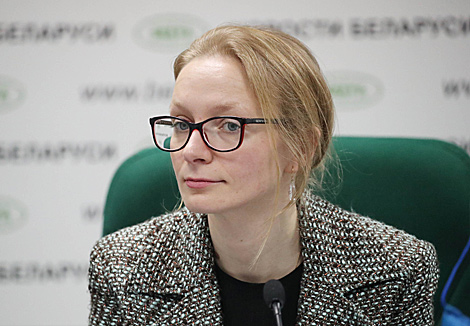Opinions & Interviews
UNDP Green Cities project in Belarus expected to reduce CO2 emissions by more than 90,000t

MINSK, 11 December (BelTA) - Three pilot initiatives of the UNDP project “Supporting Green Urban Development in Small and Medium-Sized Cities in Belarus (Green Cities)” for 2016-2021 will help reduce CO2 emissions by more than 90,000 tonnes, project manager Irina Usova told a press conference in BelTA’s press center.
The importance of the theme of sustainable development of cities and communities is highlighted by the inclusion of Goal No. 11 on the global sustainable development agenda. This goal seeks to make cities and communities open, safe and sustainable. The UNDP project “Supporting Green Urban Development in Small and Medium-Sized Cities in Belarus (Green Cities)” is aimed at achieving this goal. The project is funded by the Global Environment Facility (GEF) and implemented in partnership with the Ministry of Natural Resources and Environmental Protection in 2016-2021. One of the main components of the project is the pilots on sustainable urban transport in Polotsk and Novopolotsk and energy efficiency in Novogrudok. It is expected that the cumulative effect will be the reduction of direct CO2 emissions by 91,100 tonnes in the course of the project.
“Through the mobile component (improving urban transport and developing bicycle transport) we expected the emissions to go down by 77,800 tonnes, the rest will come through energy efficiency measures,” Irina Usova noted.
Visual maps will be developed as part of the project to assess the reduction of pollutant emissions into the atmosphere in the wake of the initiatives.
Green city must consistently meet the needs of several generations, make a major contribution to the economy and help reduce greenhouse gas emissions, said Natalia Zharkina, the head of the directorate of environmental policy, international cooperation and science at the Ministry of Natural Resources and Environmental Protection. This is especially important as 70% of the population lives in the cities, mostly in the cities with a population of 100,000 and more. This is why Belarus is developing an integrated approach to improving urban sustainability through energy conservation, developing transport and urban mobility, reducing greenhouse emissions and other measures. “Green cities is no longer a dream but a reality. But there is still a lot of work ahead, including on the adjustment of legislation, coordination of efforts of the authorities and the public,” Natalia Zharkina said.







 print version
print version make home page
make home page add to bookmarks
add to bookmarks

